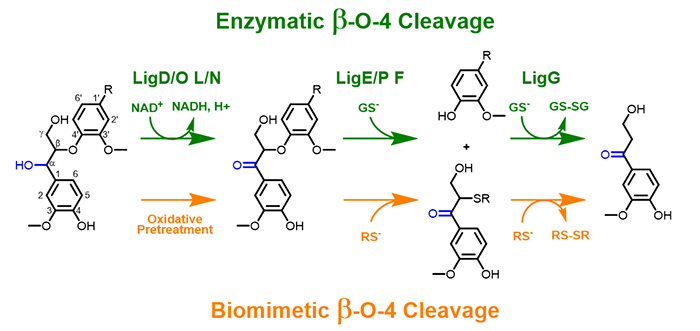Research: Project 5
Biomimetic cleavage of lignin for the production of value-added biofuels and chemicals

As part of the DOE-funded Great Lakes Bioenergy Research Center, we are focusing on reductive cleavage of lignin that mimics the chemistry of several successful lignin degrading bacterial enzymes. In particular, we have developed a mild strategy that uses the nucleophilic and reductive properties of thiols to cleave keto aryl ether bonds, an important linkage in the lignin polymer backbone. Current work in our lab seeks to expand the scope of these thiol redox carriers, apply it to an electrochemical system to increase efficiency, and explore other biological processes as a model to valorize polymeric lignin.
